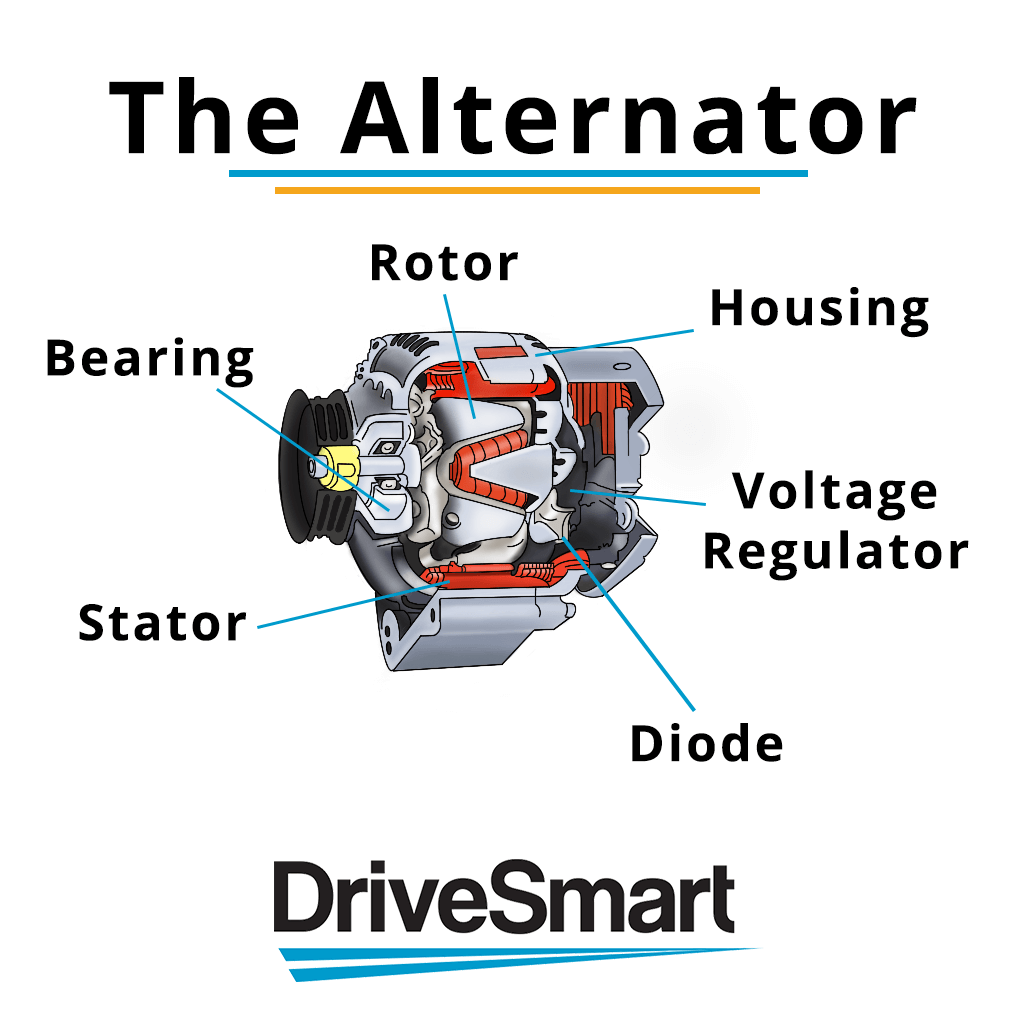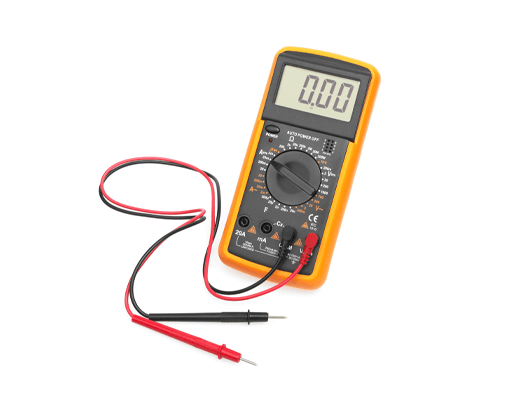 Swipe for more categories
Swipe for more categories 
What Does a Car Alternator Do?
Warning: Undefined variable $post_id in /var/www/dsw/wp-content/themes/DriveSmart_2024_v1.1/single.php on line 27
April 17, 2019
Warning: Undefined variable $post_id in /var/www/dsw/wp-content/themes/DriveSmart_2024_v1.1/single.php on line 75
What Does a Car Alternator Do?
Warning: Undefined variable $post_id in /var/www/dsw/wp-content/themes/DriveSmart_2024_v1.1/single.php on line 76
April 17, 2019
Among the components that provide support to the initial functionality of a vehicle, a car’s alternator is one of the most important. Not only does this component play an integral part in the car’s composition, but it also provides the vehicle with the ability to move.
Although the alternator is a vital function to a vehicle’s operation, its operation is not a direct result for movement of the vehicle. Instead, the alternator is a contributing component operating alongside the battery and many other vital parts.
What Is an Alternator?
An alternator is one of three parts that comprise a car’s automotive charging system. Typical charging systems consist of a car battery, the voltage regulator and the alternator itself. When these components operate in sync, power is provided throughout the electrical systems of the vehicle.
Once power is flowing a car will then be able to meet the electric power requirements needed to start the engine, keep the car running, illuminate dash lights and operate the onboard computer systems. Without all three of these components working in tandem, a vehicle will not be able to provide the power to ensure the engine is running.
What Does an Alternator Do?
An alternator provides constant power to the car battery and is a component that continuously generates energy while the car is being operated. It allows the car to charge the battery while it is in motion, keeping the car in its full operating state throughout the entirety of the trip. If the alternator stops operating as intended, a car’s battery will begin depleting as the vehicle is driven – causing the car to shut down once the battery has run out of charge.
How Does an Alternator Work?
Much in the same way a car’s overall charging system is comprised of a multitude of components for functionality, the alternator consists of various parts to ensure working order. Those parts are as follows:
- Voltage Regulator
- Stator
- Rotor
- Diode
All of these components are required to work in tandem to provide an efficient power output. Similar to how a common generator works, an alternator’s internal belt spins the pully on the alternator, causing the rotor to spin quickly.

The rotor itself is comprised mainly of magnets, which encase themselves in a collection of copper wires. This nest of magnets is referred to as the stator. As the magnet spins, electricity is produced and harnessed into the diode. This diode then converts the electricity from alternating current (AC) to direct current (DC) to match the car batteries power output.
Lastly, the voltage regulator receives the power and disperses the energy as needed. As most car batteries only hold 12 or 13 volts, the voltage regulator will cut off power flow to the battery as to not overcharge the battery. Overcharging the battery could lead to internal damage to the battery as well as the surrounding components inside the car. The voltage regulator is also responsible for providing the battery a steady flow of power while in operation.
How Long Do Alternators Last?
Among a list of common repairs, most vehicle owners have probably had an experience with their alternator going bad on them. This is due to the extensive amount of work this individual component endures on a daily basis. The constant generation of power, size of the engine, the number of electronics being used while driving, and the abrupt starts and stops the user exposes this part to will greatly impact the lifecycle of it.
Alternators typically last about 6 – 7 years or 100,000 to 150,000 miles.
Signs of a Bad Alternator
Like most external components attached to a car’s engine, alternators will not last forever. In the event an alternator is failing, the device will provide varying signs alluding to its inevitable failure. Failing alternator symptoms can be displayed in a variety of ways, including:
Headlights Begin to Dim
While driving with the headlights enabled, an alternator may display signs of failure through the consistency of its illumination. If your headlights dim while coasting, but return to normal when accelerating, that is a sure sign your alternator is presenting issues. This may also be exhibited in cabin lights including dome lights and reading lights.
Check Engine Light
If your check engine light illuminates out of nowhere, it may be due to the alternator failing. The check engine light will enable after a failing alternator is detected to inform the vehicle that there is an issue with it’s charging system. Stopping at a local AutoZone or similar auto parts store will allow you to check the status of the check engine light.
Dead Battery
If an alternator has stopped functioning, the car’s battery will no longer receive the necessary charge required to operate as intended. This will cause your car to operate off of battery power alone, which will quickly deplete the remainder of its charge. If your car has a battery gauge, you can monitor its decrease as you are driving. It is recommended using the remaining power to pull to the side of the road or enter a parking lot to give a tow truck enough room to extract your vehicle.
Electrical Systems Working Improperly
Since your car will operate off of battery power alone, you may notice your internal lights flickering, the dashboard going dim, or the audio system struggling to maintain power. These symptoms occur because your car’s alternator is no longer providing the power required by the battery.
How to Test an Alternator
If you have the necessary tools, you can diagnose your car’s alternator to determine if this component is bad. Though, it is fairly easy to tell once an alternator is no longer operating as the symptoms can be serious and leave your car immobile. Regardless, self-testing will allow you to determine the possibility of transporting your car to the nearest repair shop without the need of a tow truck.
The steps necessary for testing an alternator are as follows:
1. Use a Multimeter to Test the Battery
The first step requires the use of a multimeter. A multimeter is a tool that uses a positive and negative terminal to read the desired output by an electronic device. Budget models can be found at Walmart, Autozone or other car parts store for approximately $20. Ensure the multimeter is set to output the reading for volts, as multimeter readers are capable of assessing a multitude of currents each with separate values.

You must turn your car’s engine off completely before testing the base output of the car battery. Open the hood and connect the positive and negative readers to their respective battery terminals. Holding the readers on the battery terminals, look at the output displayed from the multimeter. The battery should be outputting a constant 12 volts, allowing the car enough power to begin the alternator.
If the displayed voltage is below 12 volts, external charging of the battery is required. This can be done through the use of an external battery charger.
2. Start The Engine and Test the Battery Output
Step two requires starting the vehicle’s engine with the car’s hood still open. While still in park, begin pressing on the gas pedal to rev the engine, allowing the needle to hover at 2,000 RPMs. The alternator should begin outputting power as the vehicle’s battery is drained. With the help of another person, place the multimeter readers back onto their respective terminals. The power output should now read between 13 and 14 volts on your multimeter.
If the voltage remains the same or begins decreasing, your alternator is no longer functioning as it should. Your multimeter test will allow you to determine if the issue is a sign of a bad car battery vs. alternator, as a bad battery wouldn’t provide the output necessary to start the engine in the first place.
The most noticeable symptom of a bad battery is that of when the engine cranks but the car won’t start. If your car suffers from this symptom, you will need to purchase a battery replacement for full functionality.
Can You Jumpstart a Car with a Bad Alternator?
Unfortunately, breaking down after your vehicle’s alternator goes bad will leave you stranded. Since a bad alternator will result in a lack of power provided from the battery, your car will almost always experience a complete shutdown with little to no chance of jumpstarting it.
While using jumper cables to jump-start your car and provide your battery a charge may work to bring the battery back to life; this will only be a momentary fix as the alternator is what allows for the battery to begin charging after a successful jump. To charge a vehicle with a bad alternator, you will need to use an external battery charger, which provides a direct charge to the battery itself.
Repairing an Alternator
A failing alternator should always be taken seriously and handled immediately after your car begins showing symptoms of one. Continuing to drive with a bad alternator is dangerous and could leave you stranded out on the road once the component breaks altogether.
You should never attempt to repair an alternator that has gone bad on your car. Once an alternator goes bad, you must replace the component with a brand new one before your car will be up and running again. Performing an alternator replacement can be difficult and is a task that should always be left for a certified mechanic.
On average, most alternator replacements will cost around $600 to $800 with labor included. The alternator part itself typically ranges from $500- $600, with labor costs making up the remainder of the bill.
Your Alternator Is Important
After learning what an alternator does and how it works, most would agree that their car’s alternator is extremely important and something that should be taken care of. Your alternator will inevitably wear over time from normal usage and it’s crucial that you ensure your car is equipped with a healthy alternator at all times.
Although there are certain serious car issues that many may put off to the side, a failing alternator is not one of them. Your car depends on it to be able to charge the car’s battery while you’re driving; thus, keeping your vehicle always in motion.
In order to curtail repair expenses, a vehicle protection plan is a vital asset. Drivesmart’s Powertrain Plus program is a great option for drivers with high mileage vehicles who want to avoid expensive repairs on things like the alternator. Newer vehicles with lower mileage can benefit even further with Drivesmart’s Elite plan. Whatever car or truck you’re driving, Drivesmart has a protection plan tailored to keep the cash in your pocket when things go wrong.
"> /var/www/dsw/wp-content/themes/DriveSmart_2024_v1.1/single.php on line 177
">
"> /var/www/dsw/wp-content/themes/DriveSmart_2024_v1.1/includes/quote-modal.php on line 8
">


